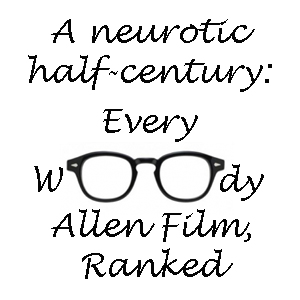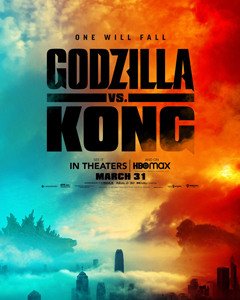“Godzilla vs. Kong” (HBO Max), like the three previous films in the Monsterverse series, is better at creature battles than it is at anything deeper such as character relationships or state-of-the-world insights. But it can’t be denied that it’s an entertaining spectacle when these two behemoths (I’m somewhat surprised to find out Kong is nearly as large as Godzilla) go mano-a-mano … I mean, monster-a-monster.
Vibrant spectacle
The CGI is outstanding, and the overall visual impression of director Adam Wingard’s film is an appealing neon. The fights often leave a residual blueish-purple streak across the screen, and one appropriately (considering Gojira’s roots) gets an impression of Tokyo’s colorful nighttime streets – although we’re actually seeing Hong Kong (also appropriate, considering Kong’s name).
Writers Max Borenstein (returning from “Godzilla,” “Kong: Skull Island” and “Godzilla: King of the Monsters”) and Eric Pearson (many Marvel Cinematic Universe projects) pack the film with cool weird science. Most notable is a riff on Jules Verne’s “Journey to the Center of the Earth,” as Hollow Earth is where Kong apparently originated … somehow.
“Godzilla vs. Kong” (2021)
Director: Adam Wingard
Writers: Eric Pearson, Max Borenstein (screenplay); Terry Rossio, Michael Dougherty, Zach Shields (story)
Stars: Alexander Skarsgård, Millie Bobby Brown, Rebecca Hall
If it was ever explained how Kong and other Titans ended up on the surface, I forgot that from the previous films. I’ve liked every entry, but they don’t stay with me. A friend of mine is rewatching the first three before delving into this one, and that’s a good call.
Pseudo-science
The pseudo-science and pseudo-explanations in “GVK” are pseudo-interesting. In Hollow Earth, gravity flips, allowing Kong to float from one rocky surface to another – each surface existing in the sky from the other’s perspective. Also, we see the humans in a small ship blast through a tunnel to Hollow Earth, flip with the gravity, and turn out fine (although a vomit bag is referenced).
But the construction of this amazing tunnel and incredible ship come in throwaway lines – the deceased, offscreen brother of Nathan Lind (Alexander Skarsgard) oversaw construction. And there’s no mention of how there is light at the Earth’s core. The science of these films is fascinating yet fleeting, mesmerizing yet made-up.
Strong cast, weak characters
“GVK” almost has the best characters of the saga, but by the end I decided “Kong: Skull Island” remains superior (and the series’ best entry overall). After all, Kong is thinking of Brie Larson’s Mason Weaver when “Over the Mountain, Across the Sea” plays at the beginning, right? Regardless, a problem with this series is that the human characters don’t carry from film to film enough. (This is because “Skull Island” is set in the 1970s, but it didn’t have to be.)

At least “GVK” improves in this regard. “Stranger Things’ ” Millie Bobby Brown returns from “King of the Monsters” as Madison Russell, who loves Bernie Hayes’ conspiracy podcast about the Apex Corporation. The actress very much channels a young Winona Ryder now, especially with her voice.
The other actors go about 75 percent of the way toward the most colorful characters they’ve played; it’s as if someone told them “Don’t even try to upstage ’Zilla and Kong.” Julian Dennison (“Deadpool 2”), with his delightful Aussie accent, plays Madison’s timid friend, and Brian Tyree Henry (“Atlanta”) is the flinchy podcaster.
Demian Bichir brings more flavor as the Apex head honcho. Some sparks of rivalry briefly fly between scientist Nathan and corporatist Maya (Eiza Gonzalez). Some girl-and-her-monster fun comes from deaf Jia (Kaylee Hottle) and Kong.
But “GVK” is ultimately uninterested in those arcs, and it’s even less engaged in making a statement; the closest it comes is the not-quite-cogent “science good, corporate scientific innovations bad.”
Film knows who its stars are
Instead, “GVK” focuses on the title beasts. It’s a smart move, because this is where it shines: Gojira and Kong register as characters with feelings and motivations. It’s a little simple that the atomic dinosaur wants to eliminate the jungle beast because “there can only be one alpha,” but that was a key point of the previous entry, and after all, brains are not the largest organs on these Titans.
Kong is the character we feel for, a super-mighty Joe Young. Being a gorilla, he’s more “human” than Gojira; it’s similar to how we lean toward the humanoid Predators in the “Alien vs. Predator” pictures. Plus, he can communicate with the little deaf girl about their love of home, so that’s cute.
I have to give the Monsterverse this: It’s consistent in its aims and its quality. Early CGI films, such as 1998’s “Godzilla,” were hesitant about spending screen time on monster effects. These modern movies hesitate to delve into themes or human characters, but the action is not reined in any more than Kong is after he breaks his chains. I wish “GVK” wasn’t so ephemeral, but it’s undeniably viscerally entertaining in the moment.

